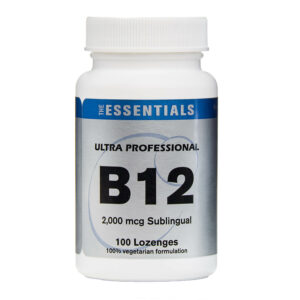
In our final installment of the series, we’re still discussing secondary headaches. Remember that a headache is secondary when it is caused by another condition. It’s important to reiterate that some secondary headaches don’t play by the rules. Call you doctor if anything weird or out of your normal is going on.
Rebound headaches
Rebound headaches or medication overuse headaches are mean and ironic. They’re due to overuse of painkillers for… headaches. The normal culprits include your run of the mill over-the-counter pain medications as well as prescription drugs. They can feel like a dull, tension-type headache, or they may be intensely painful, like a migraine.
Ironically enough, the signs and symptoms of rebound headaches may differ according to the type of original headache. Rebound headaches tend to:
- Occur every day or nearly every day, often waking you in the early morning
- Improve with pain relief medication but then return as your medication wears off
Other signs and symptoms may include:
- Nausea
- Listlessness
- Restlessness and difficulty concentrating
- Memory problems
- Irritability
What to do about them
The only treatment for rebound headaches is to wean yourself off of the medication that you’ve been taking to control pain. Although the pain may worsen at first, it should completely subside within a few days. But, here are a few things that may help you avoid them or alleviate the pain:
- Avoid MSG- Like other headache triggers, MSG assaults the brain by dilating blood vessels and exciting nerves. Read labels carefully for additives with names such as hydrolyzed protein, glutamate, and caseinate…all MSG in disguise.
- Warm foot baths– Make a soothing bath of hot water and a couple of teaspoons of mustard powder. The hot water will help your body to redistribute blood evenly, taking it away from concentrating in your head, and getting it to flow throughout. The essential oils in the mustard powder will stimulate the skin, distracting you from your throbbing head.
- Magnesium- Here it is again! Take 200 to 400 mg magnesium to help reduce muscle tension and spasms that can cause your head to feel like it’s exploding. But not any type will do. Make sure the supplement contains at least 200 mg of active elemental magnesium.
- Ginger- Ginger can help keep blood flow balanced, which is crucial in migraine headache prevention. Grate fresh ginger into juice, use fresh or powdered ginger when you cook, or snack on a couple of pieces of crystallized ginger candy daily.
Hunger Headaches
Hunger headaches are the easiest to figure out. They are the headache that reminds you that you haven’t eaten in a while. They are the type of headache that can make you ‘hangry’. These headaches are caused by low blood sugar, rebound dilation of the blood vessels, and muscle tension.
They can take on many forms causing pressure on both sides of the head, gripping tightness in the forehead, pain that originates in the back of the head, pain in the temples and neck, or tense shoulders, face or neck.
What to do about them
- Don’t Skip Meals- Strenuous and unrealistic dieting never helped anyone achieve anything. It will not help you get thin, fit, or healthy. It will, however, keep you in a constant state of hangry and misery.
- Eat- Regular, nourishing meals containing adequate protein and complex carbohydrates.
- Stay hydrated- And limit added sugar from beverages and foods.
- Snack- Have a healthy 100 to 200-calorie snack between meals.
Hypertension headaches
Hypertension headaches are caused by—you guessed it—high blood pressure. This kind of headaches warns of an emergency. It only occurs when your blood pressure is dangerously high. A hypertension headache will usually be felt on both sides of your head and is usually worse with any activity. Oftentimes, it will pulsate or pound. You may also experience changes in vision, numbness or tingling, nosebleeds, chest pain, or shortness of breath. These types of headaches will usually disappear when your blood pressure is under control. They won’t recur as long as your blood pressure is stabled and managed properly.
What to do about them
- If you think you’re experiencing a hypertension headache, you should seek immediate medical attention.
It bears repeating—if anything weird or out of your normal is going on, call your doctor. In some cases, a headache may require immediate medical attention. Seek immediate medical care if you’re experiencing any of the following alongside your headache:
- stiff neck
- rash
- the worst headache you’ve ever had
- vomiting
- confusion
- slurred speech
- any fever of 100.4°F (38°C) or higher
- paralysis in any part of your body or visual loss
There is a surprising number headaches that have been studied. In this series, we discussed just a few of the different types. If you would like to study further, or for more information and the complete headache chart, click here.
Sources:
https://americanmigrainefoundation.org/understanding-migraine/secondary-headaches/
https://americanmigrainefoundation.org/understanding-migraine/medication-overuse-headache-2/
https://migraine.com/headache-types/hypertension-headaches/
https://headachemd.net/types-of-headaches/hunger-headaches/
http://www.headaches.org/2008/12/11/the-complete-headache-chart/#New_Daily_Persistent_Headache


